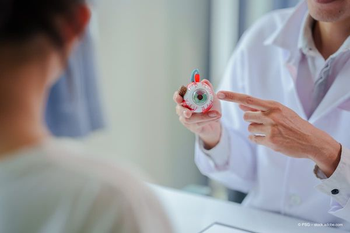
ASRS 2023: Sharing outcomes and clinical features predictive of fungal endophthalmitis
Mark Breazzano, MD, FACS, who is presenting Outcomes and Clinical Features Predictive of Fungal Endophthalmitis at the 2023 ASRS meeting in Seattle, Washington spoke with our team about this research.
Mark Breazzano, MD, FACS, who is presenting Outcomes and Clinical Features Predictive of Fungal Endophthalmitis at the 2023 ASRS meeting in Seattle, Washington spoke with our team about this research.
Video Transcript
Editor's note - This transcript has been edited for clarity.
David Hutton:
I'm David Hutton of Ophthalmology Times. The American Society of Retina Specialists is holding its annual meeting this year in Seattle. And our team will be providing all the latest content you've come to expect. Joining me today is Dr. Mark Breazzano, who is presenting Outcomes and Clinical Features Predictive of Fungal Endophthalmitis. Thank you so much for joining us today. Tell us about your presentation.
Mark Breazzano, MD, FACS:
Thanks, David, really appreciate you having me here. So we're talking about factors that can predict fungal endophthalmitis. This has become more important for us as screening guidelines have been implemented by our colleagues in the Infectious Diseases Society of America. And so this comes up quite frequently in the inpatient hospital setting. But it is a rare disease. And so in the outpatient setting, there's many tools that we use to help diagnose it. But oftentimes, the presentation of the disease is fairly nonspecific. So it can be very challenging to distinguish between fungle entity of an infection through the eye versus a more challenging or even non-fungal entity, whether it's infectious or even non-infectious. And so our study was trying to look at whether we could identify certain factors at the time of injection, when the decision is made, given how prompt and urgent is to necessitate treatment in identifying those that are fungus to begin with. Because the culture results usually don't come back or days or even a week or two after the initial culture, if it's even positive. And so one of the other challenges is that culture positivity rates are fairly low, too. So basically, what we did was we looked at all patients at Johns Hopkins, while I was on faculty there over 7 years, for essentially seeing what the ultimate results were. And looking forward through that cohort. Was there any factors that predicted whether the fungal endophthalmitis could be confirmed, whether it was still presumed, there was no other diagnosis that was consistent for a cause of endophthalmitis. And then a mask array. So any other conditions, whether they were viral, bacterial, or even non-infectious uvitits. And so comparing these we found some interesting factors and prognostic indicators for these. And the other aspect too, is we're looking at the results of screening and if any, were actually identified from screening. And so that is particularly interesting given that through the academy, we published a little over a year ago, advocating for abandoning antiquated screening guideline recommendations.
David Hutton:
Ultimately, what can this mean for ophthalmologists and the patients they treat?
Mark Breazzano, MD, FACS:
Certain risk factors, including those on the inpatient setting with immunosuppression, prior sepsis, hepatitis, other kinds of medical conditions may warrant or help support the diagnosis of fungal endophthalmitis, or at least is consideration on the offset. Typically when we do TAPs and inject, we will do vancomycin and ceftazadime, which cover bacterial entities, but it may be prudent in many cases to start off with that antifungal.
And what's the next step for your research?
I think the next step for our research is I'm hoping as PCR analysis becomes more and more standardized, routine and easier to obtain. We'll be able to actually diagnose fungal endophthalmitis and confirm it much more quickly. And so I'm hoping within the next few years, we'll have an even more robust data set with more advanced techniques.
Newsletter
Keep your retina practice on the forefront—subscribe for expert analysis and emerging trends in retinal disease management.













































